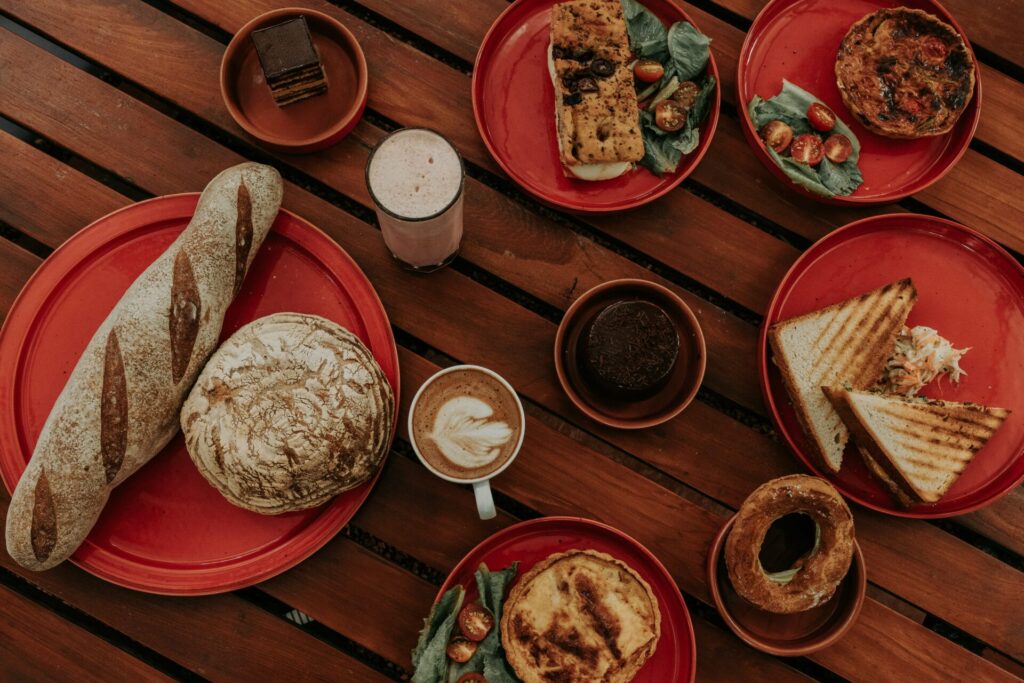In a competitive and rapidly evolving industry, strategy is what separates thriving food and beverage brands from those that struggle to gain traction. A well-crafted food and beverage marketing plan provides the direction, clarity, and consistency needed to compete at every stage of the customer journey. From understanding consumer behavior to selecting the right channels, every decision is more effective when guided by a cohesive strategy. Without this roadmap, even quality products can go unnoticed or underperform in the marketplace. That’s why brands across the sector are shifting their focus from reactive efforts to structured, goal-driven plans. As new trends and technologies emerge, this foundation becomes even more essential for sustainable growth.
The success of a product doesn’t depend solely on its ingredients or design. It relies heavily on how well it’s positioned, promoted, and perceived by its intended audience. With buyers influenced by more touchpoints than ever, brands must deliver messaging that resonates across all platforms. From digital ads to packaging, every element must work together to tell a consistent story. When brands align their internal operations with a defined marketing strategy, they can adapt faster and make smarter decisions. Ultimately, a strong plan sets the stage for better results, stronger connections, and long-term customer loyalty.
Building a Strategic Foundation
At the heart of every successful campaign is a clear and actionable food and beverage marketing plan. The initial step involves defining objectives that reflect both the brand’s identity and long-term goals. Whether launching a new product or expanding into new markets, this foundational clarity helps marketers align messaging and tactics. Setting measurable goals such as increased market share, sales targets, or engagement rates allows the team to track performance effectively. These benchmarks guide execution and provide a lens through which success can be evaluated. When objectives are realistic and specific, the plan becomes easier to activate and scale.
Once goals are outlined, research becomes the next critical building block. Market data, competitive analysis, and customer insights shape every strategic decision that follows. A food and beverage marketing plan without research is essentially built on guesswork, leaving brands vulnerable to missteps. Understanding purchasing habits, flavor preferences, and media consumption patterns helps brands deliver messaging that truly connects. This knowledge also aids in positioning the brand distinctively, creating room to outshine competitors. With the right data in hand, marketers can approach creative development with purpose and precision.
Selecting the appropriate audience to target comes after conducting research and establishing goals. Demographic and psychographic profiling ensures that messages are delivered to the consumers most likely to take action. A food and beverage marketing plan must consider customers’ identities and motivations. Factors like sustainability, health-conscious living, and brand transparency often drive today’s purchase choices. Integrating food and beverage market research into this phase provides the depth needed to craft meaningful audience segments. Once we achieve this alignment, every tactic in the plan intensifies its efforts to drive results.
Applying the Core Marketing Mix
A complete digital marketing strategy cannot function without integrating the core elements of the marketing mix. These elements include product, price, place, and promotion, which together form the foundation of any tactical effort. These variables must be balanced to reflect the brand’s position in the market and appeal to its ideal audience. A food and beverage marketing plan must explain how the product fulfills a specific need or desire, whether related to taste, functionality, or overall experience. Each decision within this mix influences how the brand is perceived and how consumers respond. When used thoughtfully, this framework supports both immediate performance and long-term brand growth.
Distribution channels, both online and offline, make up the “place” component and require careful planning. A product designed for quick convenience might perform better in vending machines or gas stations. In contrast, a health-conscious brand may find greater success in organic grocery chains. E-commerce and direct-to-consumer platforms are also becoming increasingly important in the modern food and beverage marketing plan. Brands that match their channel strategy with consumer behavior typically gain broader exposure and stronger conversion rates. Maintaining a consistent brand presentation across all platforms also helps build familiarity and trust.
Promotional strategy acts as the final connector, amplifying all the brand’s messaging efforts. A food and beverage marketing plan should outline the timing, format, and placement of these promotions with clarity. Seasonal campaigns, limited-edition launches, and holiday-based activations often help attract attention and boost engagement. Promotion can take many forms, including social media marketing for food brands, digital advertising, influencer collaborations, email newsletters, and in-store experiences. Each of these should play a specific role in moving the customer through the journey, from initial interest to final purchase. When executed with coordination and relevance, these efforts lead to stronger brand affinity and measurable business outcomes. A thoughtful promotional approach ensures that all marketing components work together toward a common goal.
Optimizing for the Digital Environment
Today’s consumers expect food and beverage brands to exist meaningfully in digital spaces. This reality means that a food and beverage marketing plan must prioritize online presence from day one. Search engine visibility, mobile responsiveness, and user experience design all play crucial roles in shaping digital performance. A robust website that applies SEO for food and beverage content marketing positions the brand as trustworthy and informed. Consumers are more likely to engage when they find helpful, relevant information such as recipes, product benefits, or sourcing transparency. Each interaction becomes a building block in the larger customer journey. These digital behaviors directly influence long-term loyalty and revenue.
Social media has become one of the most powerful platforms for storytelling in the industry. Platforms like Instagram, TikTok, and Pinterest offer food and beverage brands visual formats that match user expectations. A well-structured food and beverage marketing plan uses these channels not only to promote but also to engage, listen, and adapt. For example, a strategy like Instagram marketing for restaurants can inspire engagement, build personality, and earn customer advocacy. User-generated content, behind-the-scenes videos, and interactive stories all enhance this dynamic. These methods bring the brand to life in a highly visual, humanized way.
Digital also offers the advantage of precision targeting and measurable results. Paid advertising allows brands to test creative, optimize placements, and scale campaigns that deliver. Email marketing, retargeting, and CRM tools make it easier to guide casual visitors toward purchase. Google ads for restaurants is also a good addition to a food and beverage marketing plan. It can help reach buyers based on intent, timing, and location. This combination of search and display offers strong ROI and greater control over campaign results. With real-time performance tracking, brands can adapt quickly to what works best. Without a doubt, digital marketing has become a permanent pillar in food and beverage strategy.

Avoiding Common Pitfalls in the Planning Process
Even with a strong framework, certain errors can weaken the entire strategy. One of the most common issues in a food and beverage marketing plan is poor alignment between product positioning and audience expectations. Brands that fail to communicate value effectively often find themselves overlooked, regardless of product quality. Emotional connection is as important as logical appeal in consumer-facing industries. Oversights in timing, copy, or visual presentation can create confusion or disinterest. By addressing these disconnects early, brands can avoid costly missteps and better support campaign outcomes. Integrating insights from food and beverage strategy consulting helps identify potential blind spots in your plans.
Another issue arises when marketing efforts depend too heavily on one tactic or channel. Trends may drive temporary spikes in visibility, but long-term success requires diversification and flexibility. A modern food and beverage marketing plan should include a mix of platforms to reduce risk and increase resilience. Brands that limit themselves to social media, for instance, may miss out on the impact of local SEO for restaurants or programmatic ads. Offline tactics like retail sampling or branded packaging can further support reach. Using multiple tools together creates a full-circle approach that drives more reliable results.
Finally, many brands fail to measure and adapt their efforts. Without defined metrics, even high-budget campaigns can operate in the dark. Strong marketing plans include benchmarks like engagement rates, conversion ratios, and customer lifetime value. Tracking performance with tools like dashboards and analytics software ensures campaigns stay effective over time. A food and beverage marketing plan supported by restaurant marketing strategies gives teams the ability to pivot quickly when performance shifts. When optimization becomes routine, marketing grows more efficient and less reactive. The brands that thrive are the ones that treat performance data as a constant source of learning.
Ensuring Cohesion Across the Customer Journey
Each customer touchpoint should reflect the same strategic intent. A disjointed experience, whether online, in-store, or post-purchase, can erode trust and confuse buyers. A food and beverage marketing plan should unify brand voice, design, and messaging across all mediums. From food and beverage packaging design to homepage layout, every detail should reinforce a consistent identity. This uniformity strengthens recall, enhances credibility, and builds emotional resonance. The goal is to create one clear brand perception, regardless of where the consumer encounters the product. This type of alignment deepens engagement and improves conversion.
Strategic cohesion also improves team efficiency. When guidelines, templates, and tone are clearly defined, creative teams and partners can execute campaigns faster and more accurately. A well-documented food and beverage marketing plan might include content calendars, mood boards, and audience personas to keep projects on track. Involving external collaborators requires clear frameworks to preserve the brand’s integrity across platforms. Unified messaging not only reduces internal friction but also increases campaign ROI. When everything feels intentional and connected, customers are more likely to trust the brand and remain loyal. Seamless transitions between touchpoints signal professionalism and care.
Scalability is another advantage of consistency. Brands that use cohesive frameworks can replicate success more easily when entering new markets or introducing new products. A food and beverage marketing plan designed with adaptability in mind allows for smart regional customization without losing core identity. Integrating trends such as sustainable packaging design or clean-label messaging can enhance appeal without disrupting the overall voice. As audiences become more values-driven, maintaining consistency while adapting to preferences becomes a competitive advantage. Whether targeting health-conscious millennials or families shopping on a budget, a clear, cohesive message remains the foundation of every smart marketing move.
Wrap Up
Planning and execution go hand in hand in the food and beverage industry. A well-structured marketing plan not only outlines what to do but also explains why, when, and how to do it. It brings clarity to creative decisions, consistency to communications, and purpose to campaign rollouts. Brands that commit to thoughtful planning are more likely to reach the right audiences with the right message at the right time. The result is more meaningful engagement, higher loyalty, and better performance across platforms. Strategic thinking gives brands the edge they need to stand out in today’s competitive environment.
For those looking to refine or build their marketing plan, expert insight can make a meaningful difference. Whether it’s aligning digital campaigns or expanding into new channels, fishbat, a New York digital marketing agency, can offer specialized consulting. To explore a strategy that fits your goals, reach out for a consultation at hello@fishbat.com or call 855-347-4228. You can also visit our about us page to learn more about how we can help. With the right foundation and the right partners, brands can navigate change and seize new opportunities with confidence. Every strong campaign begins with a clear, data-informed plan, and yours can begin the same way.

